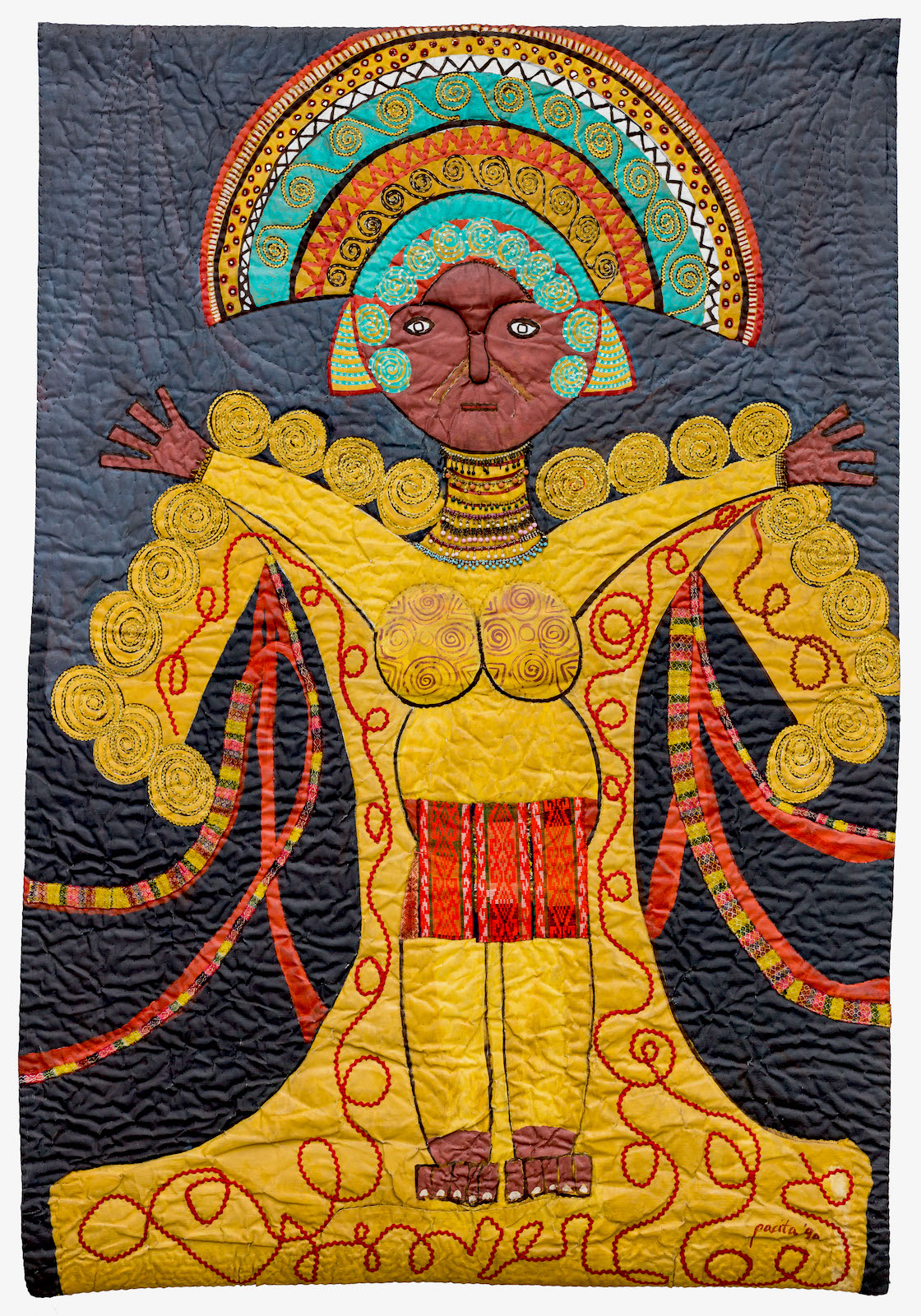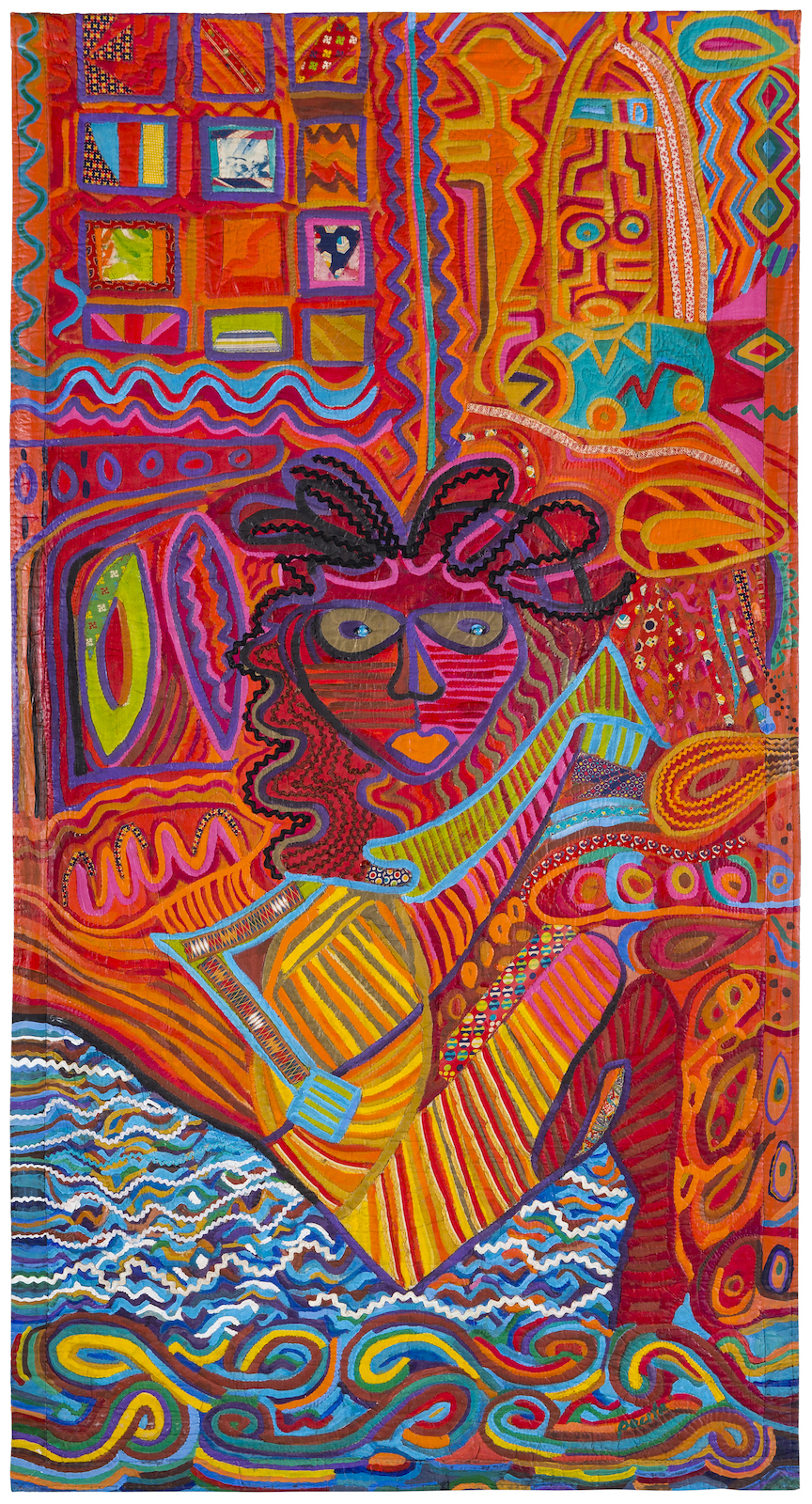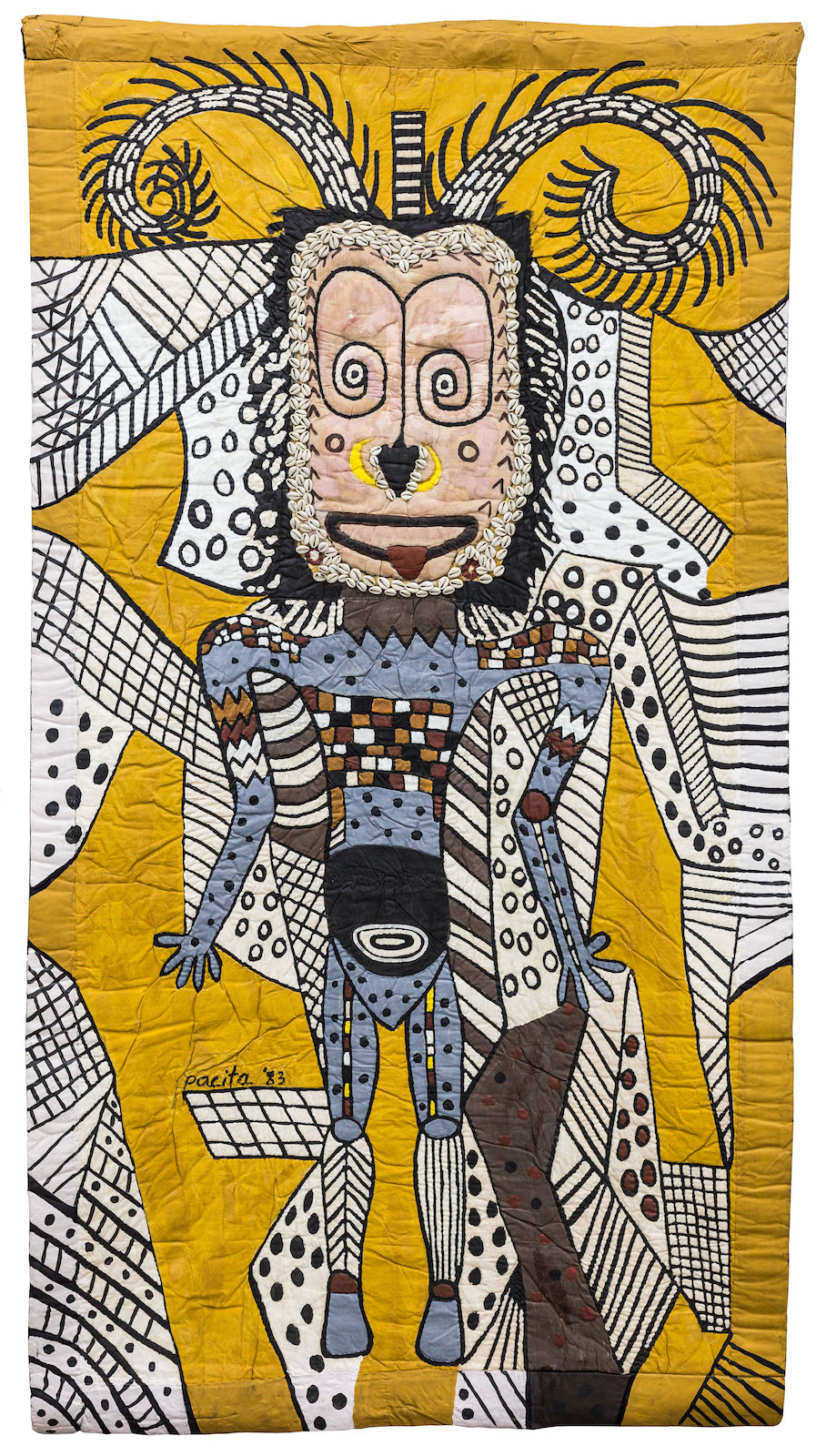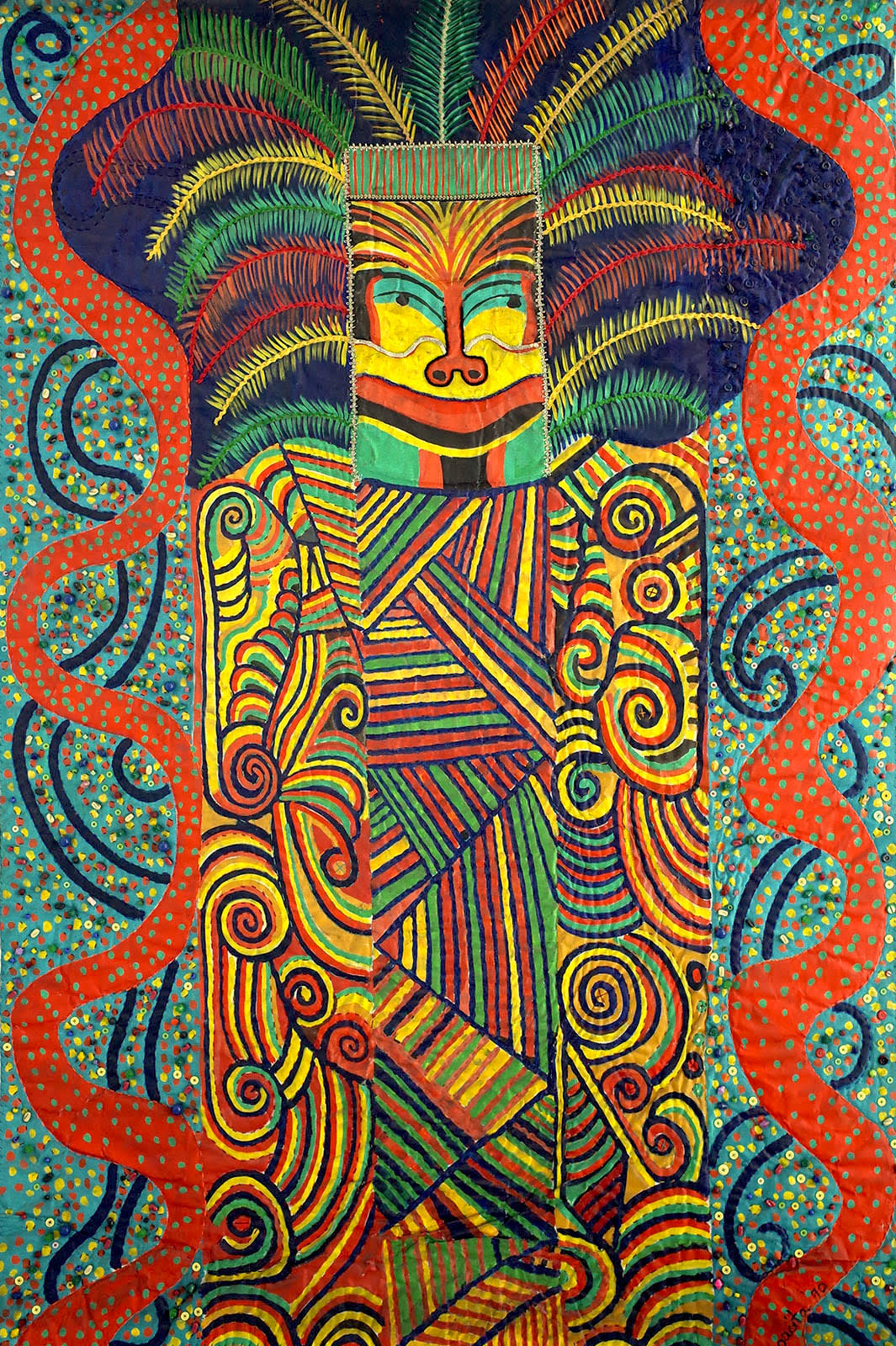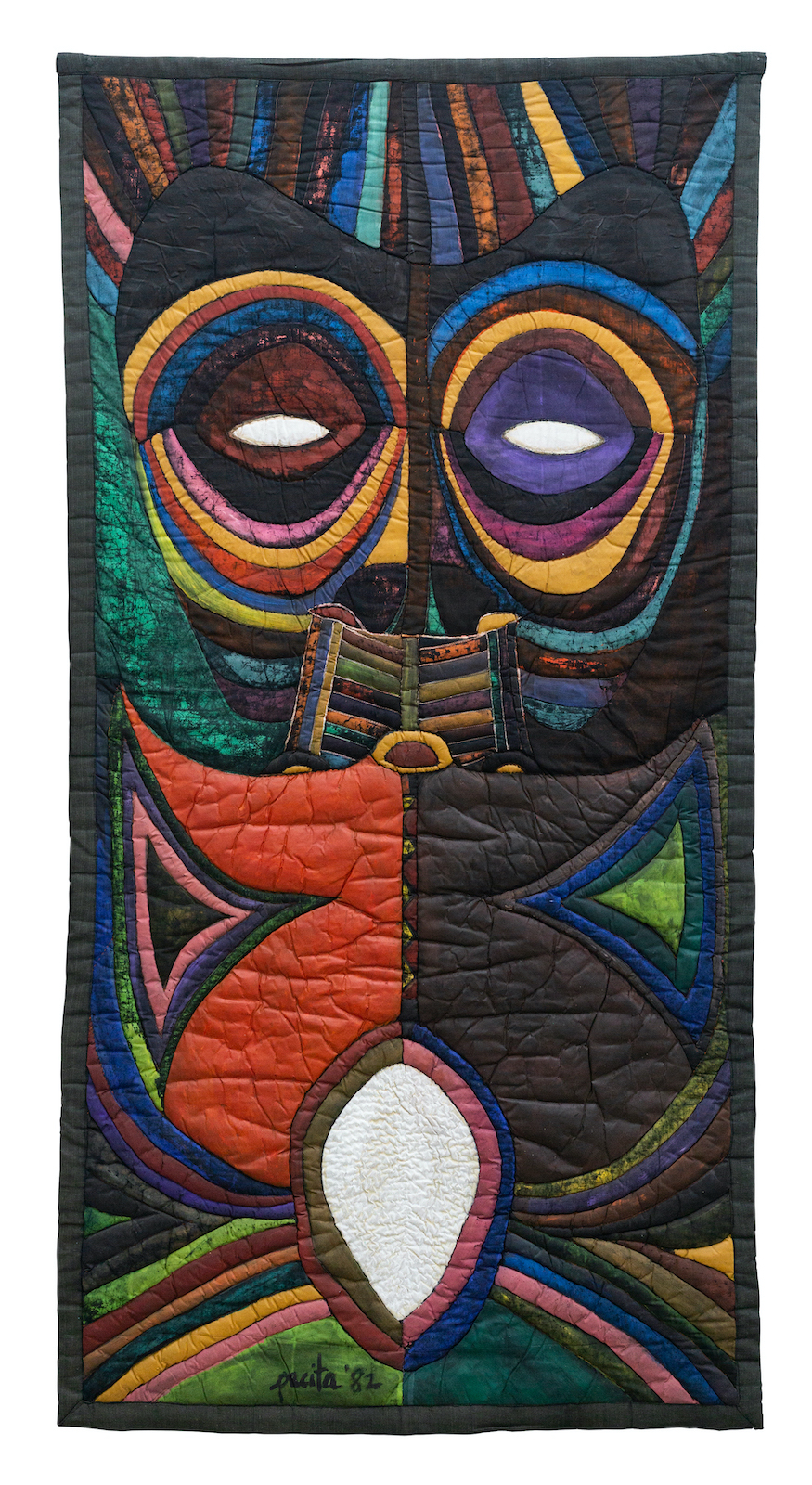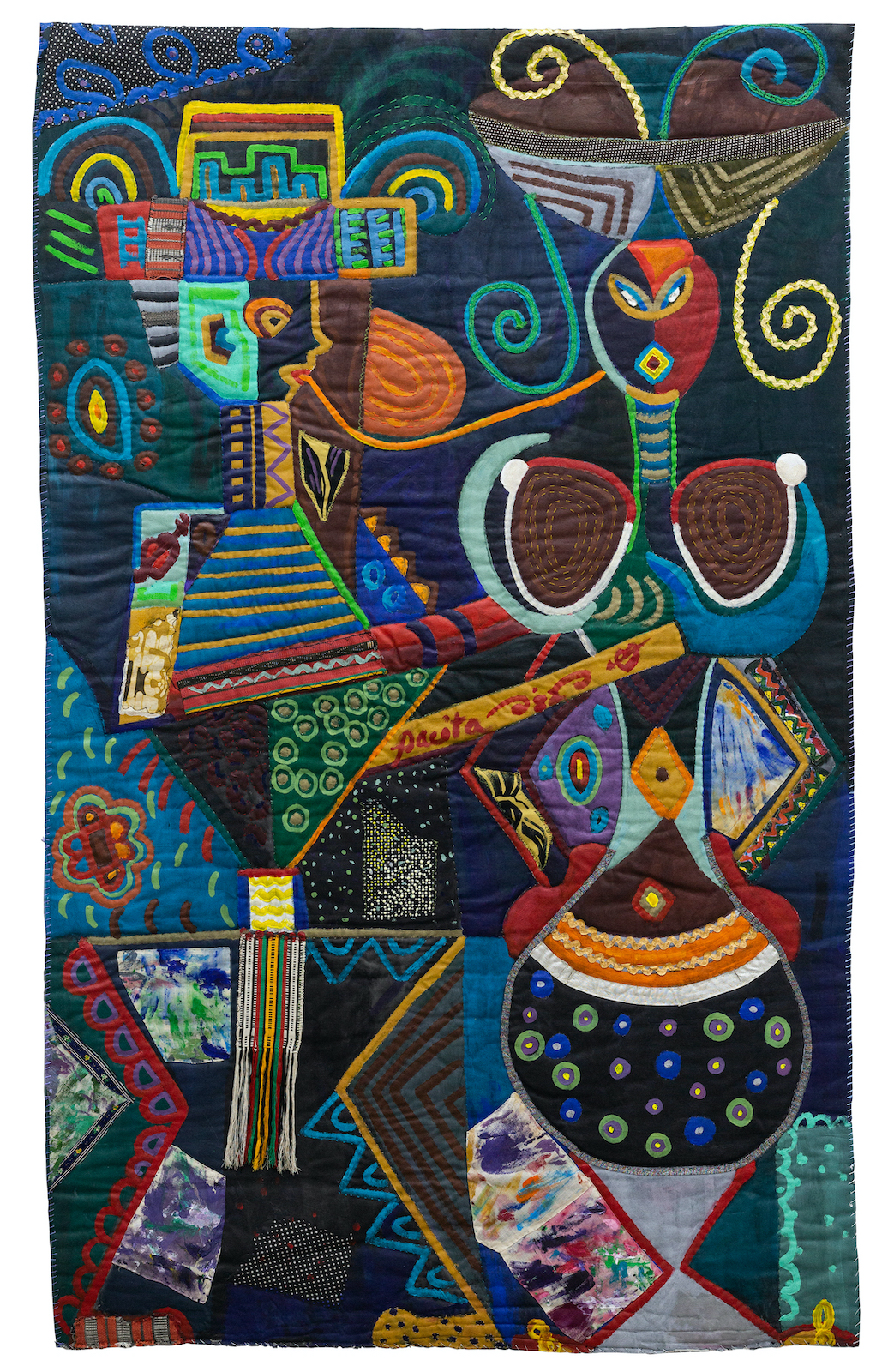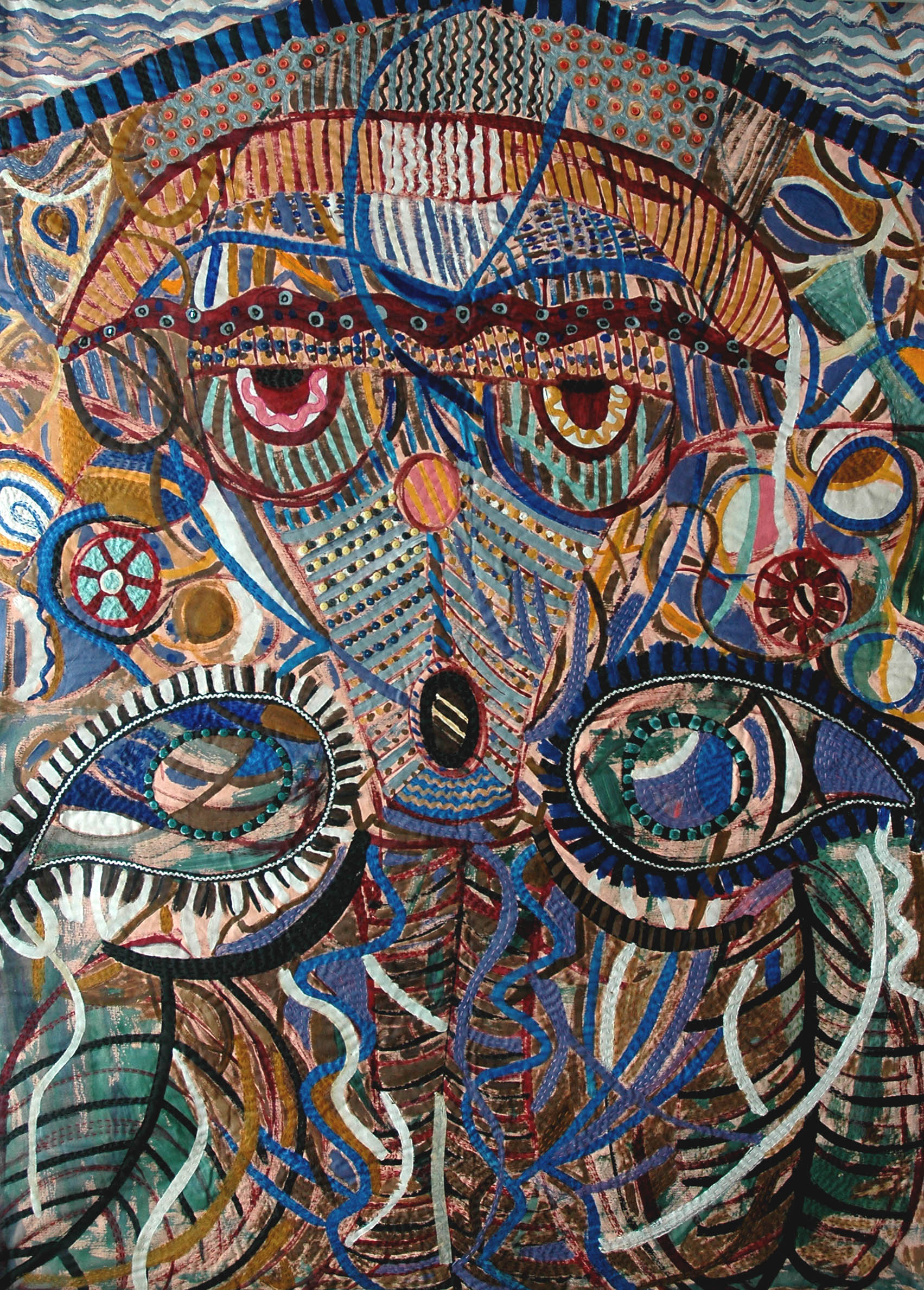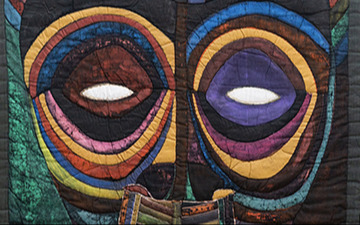
Kabinett, Art Basel Hong Kong
Pacita Abad
Booth 1D05, Hong Kong Conventions & Exhibitions Centre
Installation Views
About
It is travel that prospects form in Pacita Abad’s oeuvre. Until her death in 2004 in Singapore, Abad spent her life travelling, always finding time to set up her studio—from Sudan to Boston to Bangladesh, Abad made art. The images in her paintings intimate an itinerary of a woman artist in whose hands textile becomes technology of form as much as it is archaeology of life and material. This itinerary is one shaped by a subjectivity steeped in the complexities of a worldly womanhood: the political pedigree from the island province of Batanes in the northern Philippines, the feminized labor of sewing as heirloom from her mother and grandmother, the travels that she has done as wife to a development economist. It is a prolific practice almost prescient: involving material practice not always thought of as artistic and a method of working that managed without anticipating an audience. While hers is a practice enabled and motivated by a particular form of capital and a subject position for the most part unencumbered by economics, in her career, a particular personage is recognized: a woman entangled in relations of labor and power who somehow manages to unravel for herself a room of one’s own.
Coming off from a revisiting of her works in A Million Things to Say (Museum of Contemporary Art and Design, Manila, 2018), this proposed exhibition attempts to consider her prolific and pioneering work in textile, particularly her trapunto masks from the series Mask and Spirits, a selection from 1983 – 1988, produced while she was living in Manila and Washington D.C. It is via an innovation, the trapunto—a technique wherein fabric is padded and given tectonic quality—that textile becomes surface and dimension. Her textile elaborates a technique prone to improvisation. It is a technique of translation—between cultures, contexts, media—that bespeak a familiarity with painting, by way of which she develops her works: after painting canvas, Abad then quilts and sews embellishments onto fabric and repeats this until her desired outcome. The fascination with the mask form, common to cultures she had encountered is one borne out of interfacing with different contexts, a fleshing out of a cosmopolitan sensibility. From the figure of Arjuna to images of the Hopi mask, fabric is felicitous—the labors of handiwork play out astutely in her quilts. In its most fluent, her way with fabric disturbs thresholds of surface and flesh, evokes relief: cloth embellished with broken glass, beads, trinkets. In her quilts, a range of techniques coaxes material, yielding form: figure emerging from strips of cloth and stippling of color. Abad’s mask series exemplifies her poetics at its most articulate and calibrated—a point in her artistic practice wherein facets of her life and process inform one another: sense of material, circumstances of travel, interest in technique.
In Abad’s trapuntos, fabric is thickness and texture. The face is tangible: the embossing becomes lineaments of face. The mask is an exemplary image for Abad’s fabric works in these senses: it intimates an aspect of flesh at the same time it performs a gesture of skin. In Red Eye Mask (1994), the face is painted and faceted by fabric and ribbon, while in Hopi Mask (1990) figuration is achieved by pattern, countenance by color, and atmosphere by motif. In Arjuna (1983), the hero is sewn onto a sea of flaring color, his figure drawn with lace cloth. It is these maneuvers of material that foreground the proficiency of Abad’s fabric: in her hands textile does not aspire to painting, it is its own venture, its own engagement with form and its possibilities.
It is Silverlens’ pleasure to present Pacita Abad’s Mask and Spirits series for Art Basel HK’s Kabinett in 2019. Abad’s work offers an account of artistic life, process, and career that materializes the complexity of making art as a woman of color and that tries to recalibrate established accounts of what can be made material in contemporary art history.
Pacita Abad (b. 1946, Batanes, Philippines) was the daughter of a congressman, who had hoped that she would traverse a similar political path. But the course of Abad’s life changed after a year of travelling in 1973 to Iran, Afghanistan, Pakistan, India, Sri Lanka, Myanmar, Thailand, Laos, Taiwan and Hong Kong. She decided to take up painting. Abad later married a developmental economist, Jack Garrity, whose work predisposed them to travel to developing countries. Her experiences in each place informed her subject matter from the beginning; traditional art practices like ink-brush painting in Korea, paint brushing on silk in the Dominican Republic, batik painting in Indonesia, tie-dye in Africa, macramé in Papua New Guinea, were techniques she introduced either singly or several in one art work. In the late seventies and early eighties Abad introduced a quilting method, trapunto, onto her canvasses, which were then layered with objects on top of her quilted material: stones, sequins, glass, buttons, shells, mirrors, printed textile. She referred to this technique, and the process of layering, stuffing, stitching and the collaging of objects on painted canvas, as trapunto painting.
Characterised by vibrant colour and accumulated material, these large scale trapunto paintings traverse a diversity of subject matter: from tribal masks and social realist tableaus depicting the individuals and communities that Abad encountered throughout her travels, to lush and intricately constructed underwater compositions and abstractions. She lived and travelled in a bewildering amount of countries – from Bangladesh to Sudan, Sudan to Jakarta, Jakarta to Boston, Washington D.C. to Manila – and it is this itineracy that has defined and shaped her subject matter. Pacita Abad’s work brought together images and experiences across cultures, economies and histories and offered reflections on the global long before the discourses of globalisation and transnationalism were felt in the art world.
Her work has been featured in solo exhibitions at the National Museum, Jakarta, Indonesia; Hong Kong Arts Centre, Hong Kong, The Museum of Philippine Art, Manila; Cultural Center of the Philippines, Manila; Bhirasri Museum of Modern Art, Bangkok, Thailand; Singapore Tyler Print Institute, Singapore; The National Museum for Women in the Arts, Washington, D.C.; and the National Center of Afro-American Artists, Boston, among others. She has participated in numerous group exhibitions, including: Beyond the Border: Art by Recent Immigrant, Bronx Museum of the Arts, New York; Asia/America: Identities in Contemporary Asian American Art, a traveling exhibition organized by the Asia Society, New York; Olympiad of Art, National Museum of Modern Art, Seoul, Korea; 2nd Asian Art Show, Fukuoka Art Museum, Fukuoka, Japan and La Bienal de Habana, Havana, Cuba. She died in Singapore in 2004.
Works
